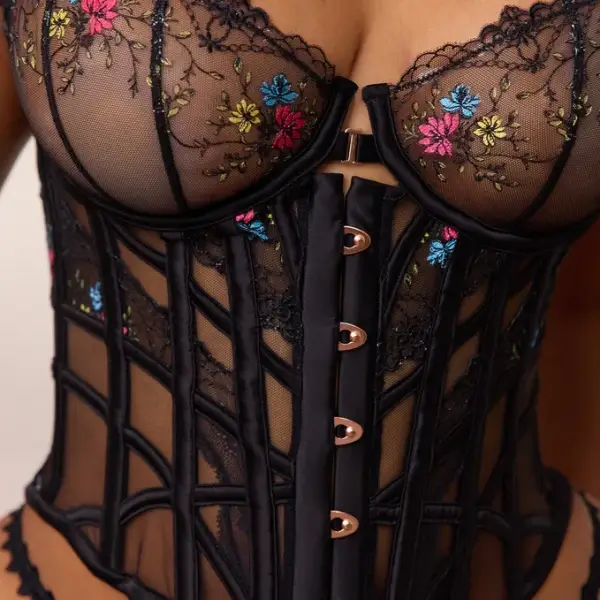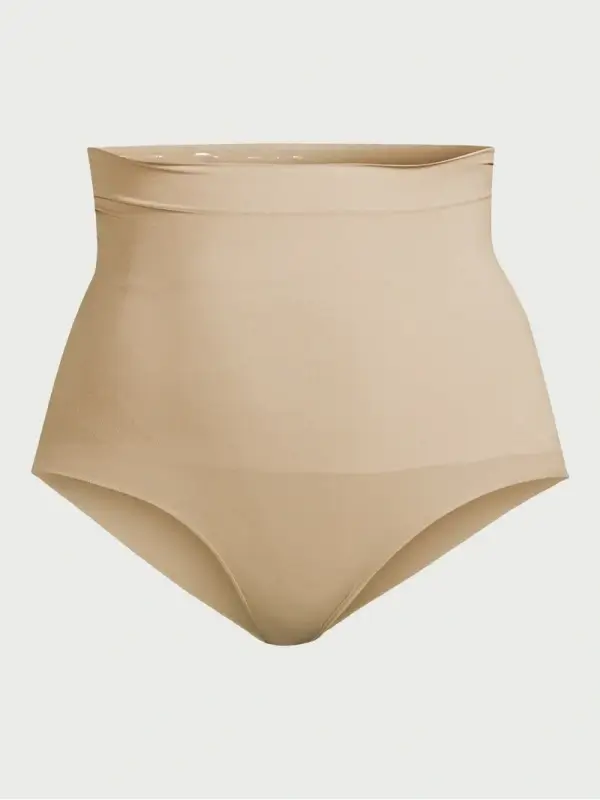How Can Modern Lingerie Brands Successfully Adopt High-Waisted Vintage Silhouettes?
Women are increasingly rejecting uncomfortable lingerie that doesn't suit real bodies. The industry's response? A nostalgic yet functional revival of high-waisted designs that both flatter and function.
Modern high-waisted lingerie successfully blends vintage aesthetics with contemporary comfort by using technical fabrics with stretch recovery, strategic boning placement, and body-inclusive sizing. The most effective designs maintain retro visual elements while incorporating breathable materials and anatomically-correct shaping.
The high-waisted retro revival isn't just a passing trend—it represents a fundamental shift in how consumers view intimate apparel. As a manufacturer serving brands across price points, I've watched this movement evolve from niche to mainstream over the past decade.
Why Are High-Waisted Silhouettes Making Such a Strong Comeback?
Modern women struggle with underwear that cuts into their midsection, creating uncomfortable bulges. Traditional low-rise panties often sacrifice comfort for a minimal look, leaving many feeling underserved.
High-waisted designs have resurged because they provide smoothing coverage while creating a flattering shape. The extended fabric panel supports the midsection, defines the waist, and creates a smooth transition under clothing—benefits that address practical needs while offering nostalgic style.
When I first noticed consumer interest shifting toward higher rises around 2016, I was curious if it would last. Having manufactured intimates for over two decades, I've seen countless trends come and go. But this return to higher rises has demonstrated remarkable staying power.
| Rise Height | Practical Benefits | Style Elements |
|---|---|---|
| Mid-Rise (2-3" below navel) | Moderate support, everyday comfort | Transitional design, subtle vintage nod |
| High-Rise (at navel) | Smooth transition under clothing, light support | Modern retro, versatile styling |
| Super High-Rise (above navel) | Maximum smoothing, waist definition | Bold vintage statement, shapewear hybrid |
| Corset-Inspired (to underbust) | Torso reshaping, dramatic waist emphasis | Full retro revival, statement piece |
I've found that different rise heights serve distinct consumer needs. Brands seeking to enter this space should consider which segment aligns with their customer base. For example, when we developed a high-rise collection for a mainstream brand targeting women 25-40, we found the navel-height rise performed best—high enough to provide smoothing benefits without feeling restrictive.
The psychological appeal of these designs can't be overlooked. In our focus groups, consumers consistently mention feeling "held" and "supported" in high-waisted styles—emotions that extend beyond physical comfort to emotional security. There's something inherently reassuring about the gentle compression these garments provide.
From a manufacturing perspective, the rise itself is just the beginning. The true art lies in the shaping techniques used within that expanded fabric area. Traditional 1950s high-waisted briefs often used rigid materials and heavy elastic that would feel punishing to modern consumers. Our successful contemporary interpretations maintain the aesthetic while engineering stretch recovery that moves with the body.
Most brands find their sweet spot is a design that suggests vintage inspiration while incorporating modern technologies. For example, we've developed power mesh panels that provide targeted support while remaining nearly invisible—creating the silhouette of a vintage garment without the restriction.
How Can Corsetry Elements Be Modernized Without Sacrificing Comfort?
Traditional corsetry often caused discomfort through rigid boning, tight lacing, and inflexible materials. Women endured pinching, restricted breathing, and limited movement in exchange for dramatic silhouettes.
Today's corsetry-inspired lingerie uses flexible plastic boning (or none at all), strategic seaming that mimics boning's visual effect, and breathable performance fabrics with built-in stretch. Modern designs create the hourglass aesthetic through clever pattern cutting rather than extreme compression.

When clients approach us wanting to incorporate corsetry elements, I always begin by asking what specific aesthetic elements they want to capture—is it the visual effect of boning? The lacing detail? The dramatic shaping? Each can be reinterpreted in more body-friendly ways.
| Traditional Element | Modern Interpretation | Comfort Improvement |
|---|---|---|
| Steel Boning | Flexible nylon boning or decorative seaming | Allows natural movement, sitting, bending |
| Rigid Lacing | Stretch lacing or decorative non-functional lacing | Maintains aesthetic without constriction |
| Heavy Brocade Fabrics | Technical jacquards with stretch recovery | Breathability while maintaining structure |
| Front Busks | Decorative front hooks with stretch panels | Easier dressing/undressing with give |
One of our most successful designs used a combination of techniques to create a corset-inspired piece without any actual boning. We engineered a jacquard fabric with varying tension zones—more rigid in vertical channels and more stretchy horizontally. The fabric itself created structure while allowing the body to move naturally.
Another innovation we've implemented is what we call "floating boning"—channels constructed to allow the flexible boning to move somewhat independently from the main fabric. This prevents the digging and pinching that occurs when rigid elements are fixed against the body, yet maintains the visual line and support benefits.
For brands concerned about production complexity, visual corsetry can be achieved through clever use of contrast stitching or piping along seam lines. In a recent collection, we created the impression of traditional corsetry through strategically placed satin piping against mesh—suggesting structure without actually restricting movement.
The placement of supportive elements has evolved significantly. Historical corsetry often placed the most rigid elements directly over sensitive areas like the lower ribs and lower abdomen. In our updated designs, we shift supportive elements to work with anatomy—following muscle groups rather than forcing the body into an unnatural shape.
Lacing details, while visually distinctive of corsetry, can be particularly challenging to modernize. We've had success with stretch satin cording that gives with body movement while maintaining the aesthetic appeal. For brands prioritizing authentic appearance, we often suggest placing functional stretch panels alongside decorative rigid lacing—giving the best of both worlds.
What Construction Methods Make High-Waisted Briefs Both Flattering and Comfortable?
Traditional high-waisted briefs often used rigid elastics and thick seaming that created visible lines under clothing. These uncomfortable designs prioritized shaping over wearability, leading many women to avoid them.
Modern high-waisted brief construction incorporates bonded seamless edges, four-way stretch fabrics, targeted compression panels, and anatomically-correct cutting. Advanced techniques like heat-sealing and ultrasonic bonding eliminate bulky seams while maintaining support.

The difference between a high-waisted brief that customers wear once and one they make their everyday favorite comes down to thoughtful construction. I've spent years refining these techniques with our development team.
| Construction Element | Technical Benefit | Customer Experience |
|---|---|---|
| Bonded Waistband | Eliminates elastic ridge at top edge | No visible panty line, no digging in |
| Laser-Cut Leg Edges | Creates smooth transition to skin | No bulging or compression at leg opening |
| Differentiated Stretch Panels | Support where needed, give where required | Moves naturally with body position changes |
| Curved Center Back Seam | Accommodates natural body curvature | Prevents sagging and center pull |
The waistband construction is particularly crucial in high-waisted designs. We've developed several approaches depending on the desired aesthetic and performance level. For everyday comfort with light support, a bonded edge with a thin silicone grip creates a smooth transition while preventing rolling. For more supportive styles, we use a double-layer construction with the inner layer providing compression while the outer maintains a smooth line.
One construction breakthrough that transformed our high-waisted offerings was the development of variable tension fabrics. These innovative textiles provide more support in the lower abdomen area while offering greater stretch over the hip bones—conforming to the body's natural contours rather than fighting against them.
The gusset design in high-waisted briefs also requires special consideration. Traditional gussets often create bulk at the center front when extended into a high-rise design. Our solution has been to develop a "floating gusset" construction that maintains the hygiene benefits of cotton while allowing the outer fabric to provide smooth shaping.
For brands concerned about production costs, strategic panel placement can achieve similar effects to more expensive seamless construction. We've developed a "comfort mapping" process that identifies the minimum number of panels needed to create optimal fit, balancing manufacturing complexity with wearer comfort.
The cut of the leg opening dramatically impacts both comfort and aesthetic. Vintage-inspired briefs often featured straight-cut leg openings that created a distinctive look but could dig into the thigh. Our modernized approach uses a subtle curve that references the vintage aesthetic while providing comfort. For an even more technical solution, we offer graduated compression at the leg edge—firmer at the top and more relaxed where it meets the thigh.
Another innovation we've implemented is what we call "dynamic rise"—instead of a purely vertical front rise, we engineer a slight curve that accommodates sitting and bending. This prevents the common complaint of high-waisted styles digging in when seated.
Conclusion
Successful high-waisted and corset-inspired designs blend nostalgic aesthetics with modern engineering. By reimagining construction methods and embracing technical fabrics, today's retro-revival lingerie delivers both the visual appeal of vintage designs and the comfort modern consumers demand.
Get a Free Quote for Your Underwear Projects
